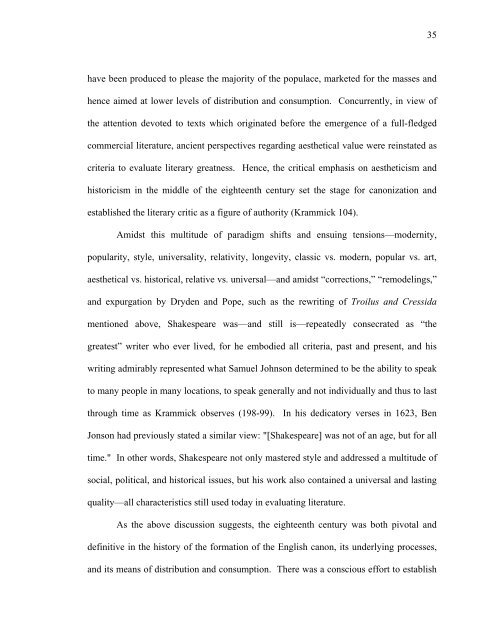Untitled - Sexey's School Moodle
Untitled - Sexey's School Moodle
Untitled - Sexey's School Moodle
You also want an ePaper? Increase the reach of your titles
YUMPU automatically turns print PDFs into web optimized ePapers that Google loves.
have been produced to please the majority of the populace, marketed for the masses and<br />
hence aimed at lower levels of distribution and consumption. Concurrently, in view of<br />
the attention devoted to texts which originated before the emergence of a full-fledged<br />
commercial literature, ancient perspectives regarding aesthetical value were reinstated as<br />
criteria to evaluate literary greatness. Hence, the critical emphasis on aestheticism and<br />
historicism in the middle of the eighteenth century set the stage for canonization and<br />
established the literary critic as a figure of authority (Krammick 104).<br />
Amidst this multitude of paradigm shifts and ensuing tensions—modernity,<br />
popularity, style, universality, relativity, longevity, classic vs. modern, popular vs. art,<br />
aesthetical vs. historical, relative vs. universal—and amidst “corrections,” “remodelings,”<br />
and expurgation by Dryden and Pope, such as the rewriting of Troilus and Cressida<br />
mentioned above, Shakespeare was—and still is—repeatedly consecrated as “the<br />
greatest” writer who ever lived, for he embodied all criteria, past and present, and his<br />
writing admirably represented what Samuel Johnson determined to be the ability to speak<br />
to many people in many locations, to speak generally and not individually and thus to last<br />
through time as Krammick observes (198-99). In his dedicatory verses in 1623, Ben<br />
Jonson had previously stated a similar view: "[Shakespeare] was not of an age, but for all<br />
time." In other words, Shakespeare not only mastered style and addressed a multitude of<br />
social, political, and historical issues, but his work also contained a universal and lasting<br />
quality—all characteristics still used today in evaluating literature.<br />
As the above discussion suggests, the eighteenth century was both pivotal and<br />
definitive in the history of the formation of the English canon, its underlying processes,<br />
and its means of distribution and consumption. There was a conscious effort to establish<br />
35



